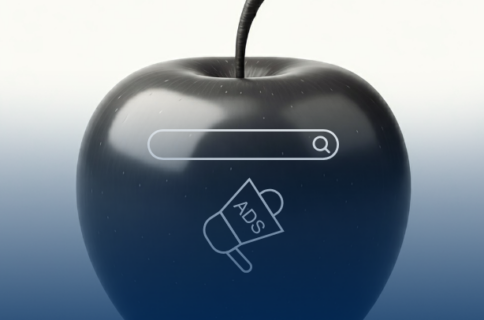How to Create a Style Guide for Spanish Translation
How to Create a Style Guide for Spanish Translation
How can you ensure that multiple people, from different places, create content that is on-brand, and uses a consistent tone and voice? Well, you create a set of rules. These rules are generally called a style guide.
One of the biggest (and most often overlooked) challenges of creating quality content is consistency. This is true for any website, but more so when you have multiple people working on the same site. And if your content is in multiple languages, this becomes even more critical.
What is a Style Guide?
Generally speaking, a style guide is a design document with a set of rules on how your business presents itself. It is a guide that includes rules on voice, writing style, sentence structure, spelling, and use for your company. It provides the critical information needed to ensure high-quality localized content for all languages and markets.
It is important to note that a style guide for translation is not a grammar manual with language rules.
It is a document that helps content creators and translators choose the preferred language elements to communicate more effectively with customers and prospects in your market.
This document should guide all the decisions you make regarding style by adapting your brand to a new market and language. For example, the guide must specify which registered trademarks can and cannot be translated and/or what types of promises can be made in the copy.
Once you start building the Spanish (or another language) version, the best-case scenario is that the document is created by the team that will be executing the translation project, and your content going forward.
Additionally, it is important that the style guide for each language be back-translated into English. Otherwise, there can be misunderstandings due to the language barrier.
Further Reading:
What is the Purpose of a Style Guide for Translation?
Accountability
The existence of a style guide, which was developed together, binds you to the terms of the agreement, like a contract. It ensures that there can be no misunderstanding of about the specific terms used in translation and their consistency. It is crucial to building and maintaining the brand’s reputation, establishing trust in these new markets where customers don’t know you as well.
Efficiency
The style guide reduces time spent discussing how to handle certain terms or which voice is appropriate. You only need to have one discussion to define the required points and you will never have to do it again. The translation team works faster and more accurately by only having to check the guide if there are any doubts regarding how to proceed. And since it is a living document, it can always be edited and improved on the fly!
Cost Reduction
Short term, building a style guide is going to cost you, time, energy, and money. But long term, the guide reduces content revision and rewriting by providing a standard and authoritative reference for translators.
What to Include in a Spanish Translation Style Guide?
Although it is not a grammar manual, you can (and should) include general and specific rules on style, punctuation, usability, and grammar.
Justification
Includes the reasons for the importance of localization, such as sales from that market, samples of source text and/or previous transcreation work. In short, any element that serves to understand why translation, transcreation, or localization will help the company.
Potential Market
Describe your market, current customers, and potential customers in detail to provide the translator with a general idea of their audience. If you have buyer persona research, it should be included for sure.
Use, Punctuation, Spelling, and Grammar
This section should include rules.
For example:
- What are your capitalization rules going to be? In Spanish, it isn’t customary to capitalize the first letter of each word in a title, although some do so anyhow for effect.
- Will periods be placed before or after the closing parenthesis? For example: (example1.) or (example1). In Spanish, both are grammatically acceptable.
- In lists, will each item on the list start with uppercase or lowercase? Will each item end with a period or will this depend on whether it is a sentence or a phrase?
For example:
- Item #1
- Item #2
- Item #3
or
- item no. 1.
- item no. 2.
- item no. 3.
Preferred Terms
Determine the repeating terms or phrases that must be used throughout the content, for example:
- If you want to say that for more information, the user should go to another section, will you use “for more information consult …” or “visit section-name for more information”?
- Are there words or phrases that should never be used? List them.
- If your target market lives in a particular country where they use local terms, determine which you are going to use or which is preferred. For example, dinero (money) or plata (money) for a market in Argentina.
- Tweet or tuit (tweet).
Visual Format
It doesn’t have to be a complete brand book, but it should include information about how to use colors and brand logos, acceptable fonts, and rules for handling images and other design elements. Examples include:
- image positioning
- list and table design
- when and how to use subtitles or credits
- headlines and subtitles,
- image alt text
- the use of italic, bold or underlined text
Voice and Tone
You should include adjectives or personality types that express how the text should come across. There are several exercises that can help make these determinations: The first is using X but not Y statements, along with examples of what is and isn’t acceptable. This table is courtesy of Business Casual Copywriting:
[mk_table style=”style1″]
| X, but not Y | Description | On-Brand | Off-Brand |
|---|---|---|---|
| Classy, but not snooty | We’ll take a 50-year scotch off the wall and pour you a glass, without going to pains to explain the vintage – that is, unless you ask. | “Our seasoned tailors guide, sew, stitch and steam every garment you order by hand for personalized sizing that fits you exactly how it should.” | “Unlike our brutish, aberrant counterparts, we hand-stitch every last seam with an esoteric wisdom gleaned from years of hands-on labor.” |
| Confident, but not cocky | Think Cary Grant’s quiet confidence – not frat-boy cockiness. We might be the coolest guy at the party, but we see no need to tell people that ourselves. Think “suave”, not “swag”. | “Our business didn’t begin behind a desk – it was shaped in the cutting room. We were tailors first. Patience, precision, perfectionism – we learned these virtues by the work of our own calloused hands. We use these lessons to give you what we hope will be the best garments you’ll ever own.” | “Our craftsmanship puts our competition to shame; nobody can match our level of attention to detail. We’d be lying if we said we didn’t know that you’re about to purchase the best shirt your closet has ever seen.” |
[/mk_table]
When translating to Spanish, you will need to make the determination of what form of address to use, depending on the markets you are targeting and the type of product you sell. Will you address users using tú (informal you) or usted (formal you)? If you are targeting the Argentinian market, then you must address the users using vos. Without specific instructions, different writers will use active or passive voice, and in some cases, you will end up with both forms of address on the same page, which is terrible UX and will instantly alienate Spanish speaking browsers.
Statements and Legal Content
Most companies maintain a privacy statement and terms of use, and this is usually the only legal content they have. However, if your line of business requires you to make more statements, you should communicate all the details to consider to the translation team to avoid any mistakes that might have legal repercussions.
For example, let them know if the beginning or end of a release should have a statement different from the original to specify that in another country the laws under which the business is governed are different.
Currency
For sites whose content includes monetary figures, it is important to inform the translation team what exchange rate will be used. In many countries the word dollar is used for their own currency, so you should make it very clear which they should specify. The peso is used in many variations across countries.
Questions to Inform Your Style Guide
As mentioned above, a translation style guide is made with an internal person from the company and the process must begin with essential questions that will delimit what can and cannot be done when transcreating, what’s allowed, the limits, the objectives, the market, etc.
Some questions you need to ask are:
- What are the reasons for translating your content?
- What do you hope to gain by translating your content?
- Is there a message you want to reinforce?
- What is your target market?
- What are the keywords that you were originally focusing on and what are they in this new market?
- How do you see your company? Serious, educational, corporate, etc.
- What sector is it mainly aimed at?
- Do you want to address your audience formally or informally?
This is a living document. If something changes, the person in charge must add the changes and inform the team working on the project so that everyone is on the same page. Have a change log so everyone can see who changed what and when.
It is important to understand that a translation style guide is a fundamental tool to optimizing the performance of global content, improve translation, localization, and speeding up what can be a time-consuming process.
Investing time and resources in creating a style guide generates an important return on investment, increases revenue by offering better content to a larger audience and simplifies future projects by creating a solid foundation of terms and information that can be extended to become your company’s most valuable tool.
Further Reading:
English-to-Spanish Translation Tips
Spanish Translation vs Transcreation
Altura specializes in Spanish translation. We ensure your content is well received by Hispanic consumers across the globe. Our process of transcreation makes your content accessible and memorable with Spanish speakers in Latin America, Spain, and beyond.





